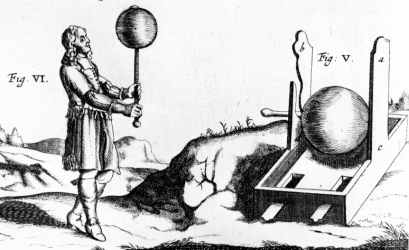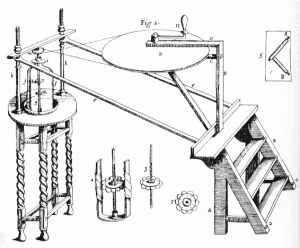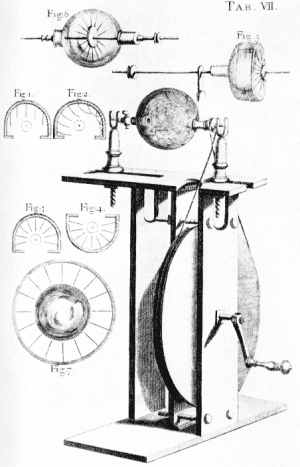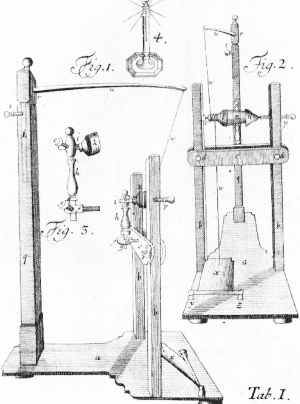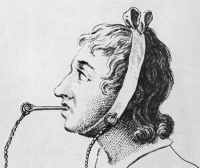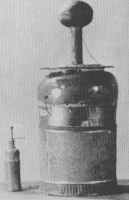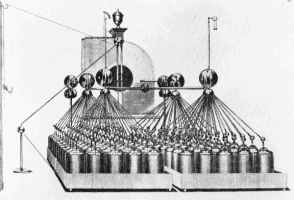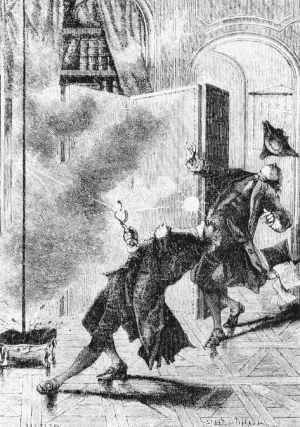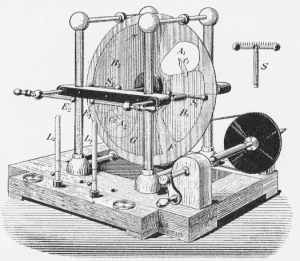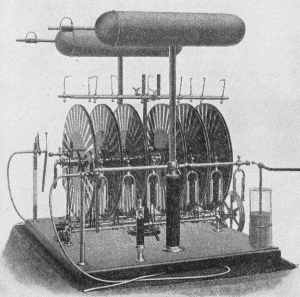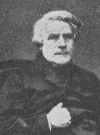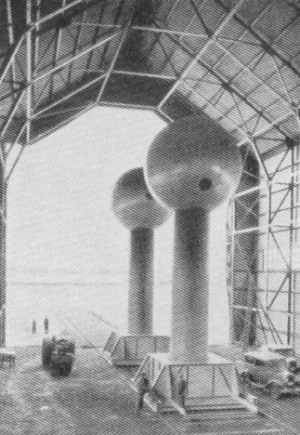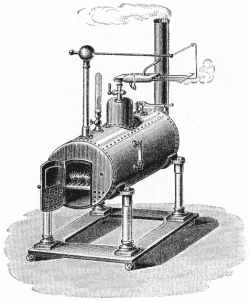The crisis in Syria was prompted by protests in mid-March 2011 calling for the release of political prisoners. National security forces responded to widespread, initially peaceful demonstrations with brutal violence. From summer 2011 onwards, Syrian President Bashar al-Assad refused
to halt attacks and implement the meaningful reforms demanded by
protestors. In July 2011, accounts emerged from witnesses, victims, the
media, and civil society that government forces had subjected civilians
to arbitrary detention, torture, and the deployment and use of heavy artillery. The Syrian people were also subject to the Shabiha, a heavily armed state-sponsored militia fighting alongside security forces. Assad consistently denied responsibility for these crimes, placing blame for the violence on armed groups and terrorists, and yet denying
humanitarian access to civilians. Alongside the worsening violence,
this lack of assistance from the UN and non-governmental organizations
(NGOs) caused severe shortages of food, water and healthcare in the country.
As the crisis continued to escalate, opponents of the Assad regime
began to loosely organize, creating several opposition organizations
such as the Syrian National Council (SNC), an umbrella organization of exiled Syrians, and the Free Syrian Army (FSA), a militarized element largely composed of Syrian military defectors and armed rebels. Though ideological divisions
have characterized the fragmented opposition, many groups lost patience
with the lack of progress on reforms andbegan to call the regime’s resignation since the fall of 2011. In August 2011, the FSA began attacking
Syrian soldiers with force, marking the first time that the opposition
resorted to violence to overthrow the regime and end the government’s
widespread attacks on civilians. With the introduction of these new
militant tactics came reports that opposition forces had also subjected
civilians to human rights violations. The conflict has also grown increasingly sectarian
in nature, with civilians being targeted by both sides based on the
presumed support or opposition to the Assad regime associated with their
ethnic identities.
Though the government-imposed media blackout since March 2011 has made external confirmation of the situation in Syria very difficult, the United Nations Human Rights Council established
an independent International Commission of Inquiry in September 2011 to
investigate the alleged human rights violations. The Commission has
since produced five reports and concluded
that the Syrian government and Shabiha committed crimes against
humanity and war crimes, as well as that anti-government groups have
been responsible for war crimes and crimes against humanity.
Initially, regional actors, such as the League of Arab States and the Gulf Cooperation Council, were hesitant to respond, and the United Nations Security Council (UNSC) was unable to reach a consensus on decisive action to end the conflict. After nearly a year of fighting, former Secretary-General Kofi Annan was appointed as Joint Special Envoy for the UN and the League of Arab States on 23 February 2012. Annan quickly set forth a six point peace plan, which included
commitments from all parties to work with the Special Envoy, a
ceasefire, and the access to and timely provision of humanitarian
assistance. Unfortunately, the deal failed to end the violence, which by then had become a de facto civil war. The UNSC then authorized the deployment of a UN Supervision Mission in Syria (UNSMIS) of 300 unarmed observers to facilitate the peace plan in April 2012, but activities were suspended in June when the observers’ presence failed to quell the violence. By late July, fatalities and casualties had mounted to 19,000 and tens of thousands of civilians remained displaced, seeking refuge in neighboring countries such as Jordan, Lebanon, Iraq and Turkey. The following month, Annan resigned
from his position, citing the lack of political unity within the UN as a
major obstacle to finding a solution to the crisis, and was replaced by
Lakhdar Brahimi. Brahimi immediately faced a tumultuous situation, with
clashes between government and opposition forces fighting for control of Damascus, mass executions by government forces and a growing humanitarian crisis. As of yet, he has been unable to negotiate an end to the violence, and on 29 January 2013, warneda still seriously divided Security Council that the country was “breaking up before everyone's eyes.”
In November 2012, opposition forces came together to create a new coalition to be more inclusive and representative of the Syrian opposition. The new body was named theNational Coalition for Syrian Revolutionary and Opposition Force, and has steadily gathered international recognition as the legitimate representative of the Syrian people. The Coalition was first recognized by the Arab League on 12 November 2012, then joined by France on 13 November, EU on November 19, UK on 20 November, US on December 12, and then others.Nonetheless, a political solution has not yet been put forward. Nonetheless, the opposition forces grew increasingly fragmented, divided by ideological barriers between secular and Islamist armed groups as well as pervasive managerial gaps. In April 2013, Al Qaeda announced its allegiance to the rebel forces and foreign fighters enlisted in the sectarian war in increasing numbers. In July 2013, the UN reported
that at least 100,000 had been killed, that a staggering 2 million had
fled to neighboring countries, and 4 million remained internally
displaced..
As early as 27 April 2011, then UN Under-Secretary-General for Political Affairs, B. Lynn Pascoe, informed the
UN Security Council that sources in Syria had reported “the use of
artillery fire against unarmed civilians; door-to-door arrest campaigns;
the shooting of medical personnel who attempt to aid the wounded; raids
against hospitals, clinics and mosques and the purposeful destruction
of medical supplies and arrest of medical personnel”. The Syrian
government also allegedly denied access to international monitors, humanitarian groups and human rights organizations while simultaneously shutting offlocal social media communications. Based on interviews, the Commission of Inquiry on Syria presented its initial findings to the Council in Geneva on 28 November 2011, reporting
evidence that crimes against humanity had been committed by military
and security forces including: sexual violence, torture, arbitrary
detention and murder.
Government attacks also shifted from sporadic violence to targeted large-scale killings. The spiraling levels of violence were implemented using cluster
bombs, which are prohibited in many states around the world. Among
other instances of violence with a high civilian death toll, 108 people
died an attack on Houla in July 2012 and 71 men were massacred in Aleppo in January 2013. In a 3 July
report from Human Rights Watch, witnesses reported the use of torture
in 27 detention facilities run by Syrian intelligence agencies,
including at the hands of the commanders in charge. Human Rights Watch
also released evidence of a clear chain of command responsibility
for atrocities committed all the way up to high-level Syrian
officials. Subsequent reports by the Commission of Inquiry also
established that gross violations of human rights had been committed by Syrian military and security forces, and stressed the harmful effects on the population, calling for an end to impunity. Furthermore, there have been repeated claims of the deployment of chemical agents by the Syrian government, which is known to have stockpiles of such weapons. Individual states such as United States, France, United Kingdom, have announced that they have evidence of the government’s responsibility to the use of chemical weapons.
The FSA also reportedly failed to comply with international human
rights and humanitarian law, according to evidence from civil society
groups including Human Rights Watch, which reported
in March 2012 that FSA forces had committed human rights abuses against
civilians including extra judicial killing, capture and torture. On 25
July 2012, Amnesty International released
a press statement saying that opposition groups have been deliberately
and unlawfully killing captured opponents in Syria, and called on all
opposition parties to abide by international humanitarian law. In
response to widespread concern, the FSA officials signeda
“code of conduct” in August 2012 pledging to refrain from torture,
attacking of civilians and other human rights abuses. This coincided
with the Commission of Inquiry’s report on 15 August, which concluded that opposition forces had committed war crimes and crimes against humanity. Meanwhile, Syrian lawyers attempted to collect
war crimes testimonies from civilians in the hope to prosecute crimes
under international law once the conflict ends. In March 2013, the
government accused rebel forces of using chemical weapons in Aleppo, though the opposition maintained that government forces had actually deployed them. The UN Secretary-General responded by setting up team of scientists to investigate the allegations, which will investigate three sites where chemical weapons have allegedly been used.
. Russia then
announced in early July 2013 that it had evidence that anti-government
armed groups had used sarin gas against government forces, though
neither the UN nor the Commission of Inquiry have confirmed.
On 17 May 2013 the UN Refugee agency announced that the number of Syrian refugees had surpassed1.65 million. Meanwhile, the UN announced that the number of internally displaced people in Syria had reached 4.5 million.The refugee crisis has taken its toll on bordering countries. According to the UNHCR as of May 2013, almost 418,000 have sought refuge in Turkey, and over 512,000 in Jordan, 561,000 in Lebanon, 103,000 in Egypt and 161,000 in Iraq. The primary reasons for fleeing appear to be atrocities committed against civilians, reported
the International Rescue Committee in January 2013, with journeys to
safety made more treacherous by winter conditions. Foreign Affairs reported
on 24 May 2013 that refugee populations faced dire conditions in the
refugee camps. Furthermore, the hosting countries are experiencing
severe pressure. In Jordan, the World Bank reported
in May that the influx of refugees is affecting the livelihood, public
services, and basic commodities of the local communities, and announced
its financial support to the government. This economic impact created resentment against the refugees within the country. Although Turkey has been more economically equipped to handle the refugee influx, social and political costs
arose, resulting in an increased risk of sectarian spillover,
particularly in areas sympathetic to Assad. Lebanon, is also
significantly burdened by the conflict, where in April 2013, Reuters reported that one out of ten residents was a refugee. Lebanon’s hospitals, electricity, transportation systems are strained, and food prices are rising. Furthermore, the country is experiencing a re-ignition
of ethnic and religious tensions, with violent clashes occurring
between Sunni and Shiite communities and between supporters and
opponents of Assad. Civil society actors, including Refugee
International, warned
on 10 July that Syria’s neighbors’ had been “stretched too thin”, and
called for urgent assistance and increased funding from the
international community. On 24 May, the UN, acknowledging the strain on
Syria’s neighbors, nonetheless urged the countries to continue keeping their borders open for refugees.
a) Regional Responses
The League of Arab States
The League of Arab States (LAS) initially stressed
that it would not take unilateral action in response to the crisis.
However, after nearly nine months of violence against civilians, the
League introduced
a peace plan, which called on the government to halt violence, release
prisoners, allow for media access and remove military presence from
civilian areas. When the government failed to uphold the plan in spite of its initial agreement to do so, the League suspended Syria’s membership on 12 November 2011 and imposed economic sanctions on 27 November 2011. On 19 December, Syria signed a peace deal, mandating an Arab observer mission to observe and report on the crisis, but the League suspended the mission on 29 January 2012 due to “critical” conditions in the country. The League then encouraged
the Security Council to take further action and appointed a Joint
Special Envoy with the UN to facilitate a political solution to the
crisis. In November 2012 the League, alongside the Gulf Cooperation
Council, recognized the National Coalition of the Syrian Opposition, an opposition organization formed
that same month from various opposition groups in order to have a more
inclusive and representative model, as the “the legitimate
representative and main interlocutor with the Arab League and GCC”.The
Coalition officially took Syria’s seat at the summit of the Arab League in March 2013.
The European Union
The European Union (EU) imposed economic sanctions, including an arms embargo, visa ban and asset freeze, against the Syrian regime in May 2011, and has heightened the sanctions periodically since then. In November 2012 the EU recognized
the National Coalition of the Syrian Opposition as the legitimate
representative of the Syrian people, and subsequently released a
statement calling for Assad to step down to allow for political transition in January 2013. In March 2013 the EU foreign ministersmodifiedthese
sanctions, making it possible for European governments to bypass the
ban on providing "non-lethal" supplies to the opposition. On 28 May
2013, the European States effectively ended
the arms embargo on the opposition in Syria and opened up the
possibility to arm anti-government rebels while upholding the arms
embargo on the Assad government. Only the United Kingdom and France have
expressed
the possibility of sending arms, while the majority of the remaining EU
member-states are worried that further militarization will only fuel
more violence.
b) United Nations Responses
Special Advisers on the Prevention of Genocide and the Responsibility to Protect
The Special Advisers of the Secretary-General on the Prevention of Genocide and on the Responsibility to Protect voiced
their concern over the Syrian government’s systematic widespread
attacks targeting civilians and reminded the government of its
responsibility to protect its population in a series of public
statements. Notably, in their fifth statement, released
on 14 June 2012, they called on the international community “to take
immediate, decisive action to meet its responsibility to protect
populations at risk of further atrocity crimes in Syria, taking into
consideration the full range of tools available under the United Nations
Charter” including a referral of the situation by the Security Council
to the International Criminal Court (ICC). On 8 July 2013, the UN
Special Adviser on the Prevention on Genocide, Mr. Dieng, warned
against the increasing use of rhetoric by political and religious
leaders in the Middle East and North Africa region as it could be used
to incite further violence in Syria.
Human Rights Council and Office of the High Commissioner for Human Rights
As discussed above, the Human Rights Council and Office of the High
Commissioner for Human Rights were seized of the crisis early on and in
August 2011 mandated an independent Commission of Inquiry to investigate human rights violations in Syria. High Commissioner for Human Rights, Navi Pillay, also repeatedly called
upon the Syrian government to assume its responsibility to protect and
prevent and prosecute perpetrators of international crimes, and has
repeatedly urged the Security Council to refer the case to the ICC,
beginning in December 2011.
Security Council
The Security Council received criticism for failing to address the crisis for over five months after protests had begun, and its subsequent inability to reach a consensus on how to move forward. The Council began with a cautious approach, not wanting to violate the UN charter
and aid a civil war; however, as the situation progressed, several
attempts at resolutions to bring an end to the conflict, were vetoed by Russia and China.. With the appointment of a special envoy and establishment
of the United Nations Supervision Mission in Syria (UNSMIS), the
Council attempted to take preventive action. Unfortunately, the
situation had escalated
already to a point of extreme violence with very limited room for
political negotiations between the disputing parties. As such, UNSMIS
immediately faced many technical difficulties
on and off the ground, including limited freedom of movement by the
government, blocked access to sites of mass violence, and the rejection
of observers’ visas. These, alongside ongoing violence, led to the
Misson’s suspension on 15 June 2012.
In October 2012 the Security Council issued press statements condemning the terrorist attacks in Aleppo and later calling on all relevant parties to implement a ceasefire in honor of Eid al- Adha, Since then, the Council has received significant pressure to refer the case in Syria to the ICC, including from the High Commissioner for Human Rights and the Special Advisers on the Prevention of Genocide and RtoP as well as from over 50 Member States who signed a letter saying as much in mid-January 2013.
General Assembly
The General Assembly adopted several resolutions
calling for all parties to support efforts to peacefully resolve the
crisis. In an attempt to pressure the Security Council to act, the
General Assembly requested that UN Secretary-General Ban Ki-moon brief the Council in January 2013. At this time, the Secretary-General stated:
“We must do everything we can to reach Syrians in need. We must
intensify our efforts to end the violence through diplomacy, overcoming
the divisions within Syria, the region and the Security Council.” On May
15 2013, the General Assembly adopted a resolution
condemning the conflict’s escalation, violations of humanitarian law,
and violence, demanding the government meet their responsibility to
protect their population, comply with international law, and cooperate
with the Commission of Inquiry to investigate claims of chemical
weapons. The resolution also asked the Secretary-General to report on the resolution’s implementation to the GA within 30 days.
c) National Actor Responses
Turkey’s border with Syria has seen skirmishes and shelling since July 2012, and in October,
five Turkish civilians were killed by Syrian mortar fire, which Turkey
responded to with proportional arms. In February 2013, an explosion
on the Syrian-Turkish border killed at least 13 people, putting further
strain on the deteriorating relationship between the two. After another
instance of car bombs on the border in May 2013, killing 43, Turkey warned it would take all steps necessary to protect itself. Though NATO had originally stated it would not intervene in the Syrian crisis, the Organization placed patriot missiles on Turkey’s border with Syria in January 2013 to defend against external attack, at the request of the Turkish government. Anders Fogh Rasmussen, NATO’s secretary general,had previouslywarnedthe
Syrian government on 3 December 2012 that the international community
would not stand by if the Assad regime unleashed chemical warfare
against the Syrian people.
Fighting between Syrian government forces and rebels in the Golan
Heights has meanwhile challenged the decades-long ceasefire between
Syria and Israel in the Golan Heights and complicated the operations of
the United Nations Disengagement Observer Force (UNDOF), charged with monitoring the accord. After two abductions of UNDOF peacekeepers in March and May 2013, the UN has had to contend with troop-contributing countries (TCCs) withdrawing their peacekeepers from UNDOF out of concern for their safety.
Though Lebanon has long had an official policy
of disassociation in the Syrian conflict, the influx of refugees and
increased cross-border fire from Syria has threatened to embroil the
country in its neighbor’s crisis. More recently, the announced entry of Lebanese political and military group Hezbollah and their key role in helping the Syrian government re-take the town of Qusayr in June 2013 represents the starkest indication yet that the Syrian crisis is slowly devolving into a full-scale regional crisis.
As the conflict wears on, without
distinctive action from international organizations, several national
actors have also increased their support to the Syrian opposition
politically, economically and militarily. The Free Syrian Army received a
steady stream of non-military assistance and then non-lethal military
equipment and funding from several governments, including the United States, United Kingdom, Turkey, Saudi Arabia and Qatar, beginning in June 2012.
VII. Latest Developments:
The international community called for an immediate investigation of the use of chemical weapons after the attack on civilians. The UN Secretary General has stated
that “it is his intention to conduct a thorough, impartial and prompt
investigation on the reports of the alleged use of chemical weapons
during these attacks.” The team of United Nations inspectors probing the possible use of chemical weapons returned from Syria on 31 August after two weeks of investigation. The team's results are expected in the coming days and could figure significantly in the international community's response to the crisis.
The UN Security Council convened for an emergency session on 21 August to discuss the attacks. However, it remains to be seen whether the Council’s divisions on Syria will be overcome by the latest reports of mass atrocities. Many voices inside and outside of Syria have stated that the international community and the Syrian government have both failed in their responsibility to protect Syrians, a failure that, particularly in light of the alleged attacks, has reached what some are calling a tipping point and requires an immediate and meaningful response.
Some states, already convinced that the Assad regime is behind the attacks, have declared publicly that a “red line” has been crossed and are therefore seriously considering
a military operation in order to respond to the chemical weapons
attack, which if verified, would constitute another war crime and a
violation of international humanitarian law. However, others have questioned whether a military response
solely in response to the 21 August chemical weapons attack would
actually serve to protect civilians, or if it would be mostly designed to punish the Assad regime.






